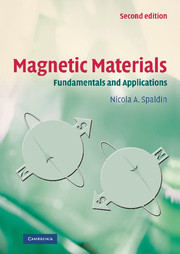Book contents
15 - Magnetic data storage
from III - Device applications and novel materials
Published online by Cambridge University Press: 05 June 2012
Summary
Today is the greatest new product day in the history of IBM and, I believe, in the history of the office equipment industry.
T.J. Watson, IBM press release announcing the 650 RAMAC computer, September 14, 1956Introduction
The data storage industry is huge. Its revenue was tens of billions of U.S. dollars per year at the end of the 20th century, with hundreds of millions of disk, tape, optical, and floppy drives shipped annually. It is currently growing at an annual rate of about 25%, and the growth rate can only increase as the storing and sending of digital images and video becomes commonplace, with the phenomenal expansion of the world wide web and in ownership of personal computers and mobile computing platforms.
Magnetic data storage has been widely used over the last decades in such applications as audio tapes, video cassette recorders, computer hard disks, floppy disks, and credit cards, to name a few. Of all the magnetic storage technologies, magnetic hard-disk recording is currently the most widely used. In this chapter, our main focus will be on the technology and materials used in writing, storing, and retrieving data on magnetic hard disks. Along the way we will see how some of the phenomena that we discussed in Part II, such as magnetoresistance and single-domain magnetism in small particles, play an important role in storage technologies.
RAMAC, the first computer containing a hard-disk drive, was made by International Business Machines Corporation (IBM) in 1956.
- Type
- Chapter
- Information
- Magnetic MaterialsFundamentals and Applications, pp. 177 - 188Publisher: Cambridge University PressPrint publication year: 2010

